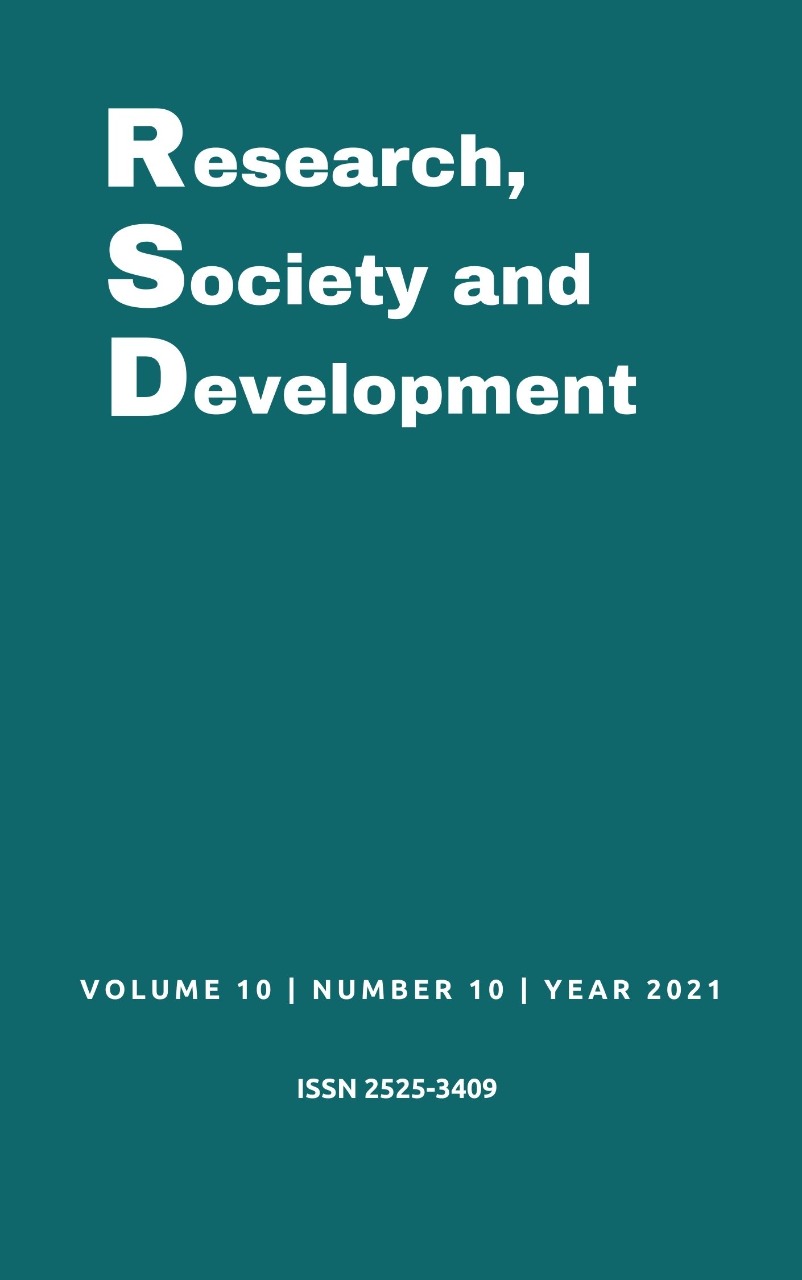Nitrogen doses and splitting in top dressing in the production, quality, and macronutrients content in zucchini (Cucurbita pepo) seeds
DOI:
https://doi.org/10.33448/rsd-v10i10.18708Keywords:
Cucurbita pepo, Fertilizing, Germination, Nutrients, Vigor.Abstract
Despite the importance of the nutrients, mainly nitrogen, in the formation and chemical composition of the seeds, little research has been done to verify the relationship between the nutrients supplied to the plants and the quality of the seeds produced. The objective of this study was to evaluate the influence of nitrogen doses and splitting on yield, quality and macronutrients content in zucchini seeds. Two experiments (crop 2014 and crop 2015) were installed, with thirteen treatments in the factorial scheme 4x3+1, with four nitrogen doses in top dressing (62.5; 125.0; 187.5; 250.0 kg ha-1), three splitting (1/6+1/3+1/2; 1/4+1/2+1/4; 1/3+1/3+1/3 of total dose in each split), and one treatment without N fertilization in top dressing (dose 0), with four replications. Seed production and quality and macronutrient content in seeds were evaluated. There wasn’t significant effect on number of fruits and seeds produced per plant. However, in crop 2014 the higher the doses of N in top dressing, the higher the seed weight per fruit and per plant, the weight of 100 seeds and the vigor (first count in germination test). In crop 2015, seeds with the best quality (germination and first counting) were obtained in the 1/4+1/2+1/4 splitting. The decreasing order of the macronutrient content in the seeds was N>P>K>Mg>S>Ca.
References
Araújo, H. S., et al. (2013). Potassium top dressing levels on fruit yield of summer squash. Revista de Ciências Agrárias, 36(3), 303-309.
Araújo, H. S., et al. (2015). Macronutrients content and extraction in zucchini plants in function of potassium top dressing levels. Brazilian Journal of Agricultural Sciences, 10(3), 389-395.
Brasil. Ministério da Agricultura, Pecuária e Abastecimento. (2009). Regras para análise de sementes (Seed analysis rules). Brasília: Mapa/ACS.
Cardoso, A. I. I. (2011). Nutrição e adubação em campos de produção de sementes de hortaliças (Nutrition and fertilization in vegetable seed production). In: Nascimento, W. M. (Ed.). Hortaliças: tecnologia de produção de sementes. Brasília: Embrapa Hortaliças, pp. 109-134.
Cardoso, A. I. I. & Souza Neto, I. L. (2016). Melhoramento de abóbora, abobrinha e moranga (Squash and zucchini breeding). In: Nick, C.; Borém, A. (Eds.). Melhoramento de hortaliças. Viçosa, MG: Editora UFV, pp. 61-94.
Cardoso, A. I. I., et al. (2016). Phosphate fertilization over the accumulation of macronutrients in cauliflower seed production. Horticultura Brasileira, 34(2), 196-201.
Carvalho, N. M. & Nakagawa, J. (2012). Sementes: ciências, tecnologia e produção. Jaboticabal: Ed, Funep.
Corrêa, C. V.; Gouveia, A. M. S. & Cardoso, A. I. I. (2014). Nutrients content in function of plants number per hole and nitrogen rates in top dressing in squash yield. Revista Cultivando o Saber, 7(4), 343-352.
Cunha, A. R. & Martins, D. (2009). Classificação climática para os municípios de Botucatu e São Manuel, SP. Irriga, 14(1), 1-11.
El-Adawy, T. A. & Taha, K. M. (2014). Characteristics and composition of watermelon, pumpkin, and paprika seed oils and flours. Journal of Agricultural and Food Chemistry, 49, 253-1259.
Ferreira, D. F. (2011). Sisvar: a computer statistic analysis system. Ciência e Agrotecnologia, 35(6), 1039-1042.
Grangeiro, L. C. et al. (2007). Accumulation and exportation of nutrients in beet crop. Ciência e Agrotecnologia, 31(2), 267-273.
Kano, C.; Cardoso, A. I. I. and Villas Bôas, R. L. (2011). Nutrients uptake by lettuce plants for seed production. Horticultura Brasileira, 29(1), 70-77.
Kano, C.; Cardoso, A. I. I. & Villas Bôas, R. L. (2012). Phosphorus rates on yield and quality of lettuce seeds. Horticultura Brasileira, 30(4), 695-698.
Kolchinski, E. M. & Schuch, L. O. B. (2004). Relationships between nitrogen fertility and grain and seeds quality in oats. Ciência Rural, 34(2), 379-383.
Magro, F. O., et al. (2010). Organic compost in broccoli seed yield and quality. Ciência e Agrotecnologia, 34(3), 596-602.
Malavolta, E. (2006). Manual de nutrição mineral de plantas. São Paulo: Agronômica Ceres.
Malavolta, E.; Vitti, G. C. & Oliveira, S. A. (1997). Avaliação do estado nutricional das plantas: Princípios e aplicações. 2. ed. Piracicaba: Potafós.
Patel, S. (2013). Pumpkin (Cucurbita sp.) seeds as nutraceutic: a review on status quo and scopes. Mediterranean Journal of Nutrition and Metabolism, 6, 183-189.
Pedrosa, M. W., et al. (2012). Yield and quality of hybrid squash (pumpkin) in response to nitrogen doses. Horticultura Brasileira, 30(2), 355-358.
Queiroga, R. C. F., et al. (2007). Yield and quality of muskmelon fruits cultivated in greenhouse with doses of nitrogen. Horticultura Brasileira, 25(4), 550-556.
Stephenson, A. G.; Devlin, B. & Horton, J. B. (1988). The effects of seed number and prior fruit dominance on the pattern of fruit production in Cucurbita pepo (zucchini squash). Annals of Botany, 62, 653-661.
Trani, P. E. & Raij, B. (1997). Hortaliças. In: Raij, B. et al., eds. Recomendações de adubação e calagem para o Estado de São Paulo. 2. ed. Campinas: IAC, pp. 157–164.
Downloads
Published
Issue
Section
License
Copyright (c) 2021 Ana Emília Barbosa Tavares; Natália de Brito Lima Lanna; Lidiane Fernandes Colombari; Emanuele Possas de Souza; Bruno Novaes Menezes Martins; Antonio Ismael Inácio Cardoso

This work is licensed under a Creative Commons Attribution 4.0 International License.
Authors who publish with this journal agree to the following terms:
1) Authors retain copyright and grant the journal right of first publication with the work simultaneously licensed under a Creative Commons Attribution License that allows others to share the work with an acknowledgement of the work's authorship and initial publication in this journal.
2) Authors are able to enter into separate, additional contractual arrangements for the non-exclusive distribution of the journal's published version of the work (e.g., post it to an institutional repository or publish it in a book), with an acknowledgement of its initial publication in this journal.
3) Authors are permitted and encouraged to post their work online (e.g., in institutional repositories or on their website) prior to and during the submission process, as it can lead to productive exchanges, as well as earlier and greater citation of published work.


